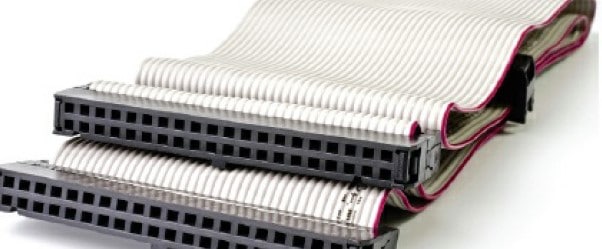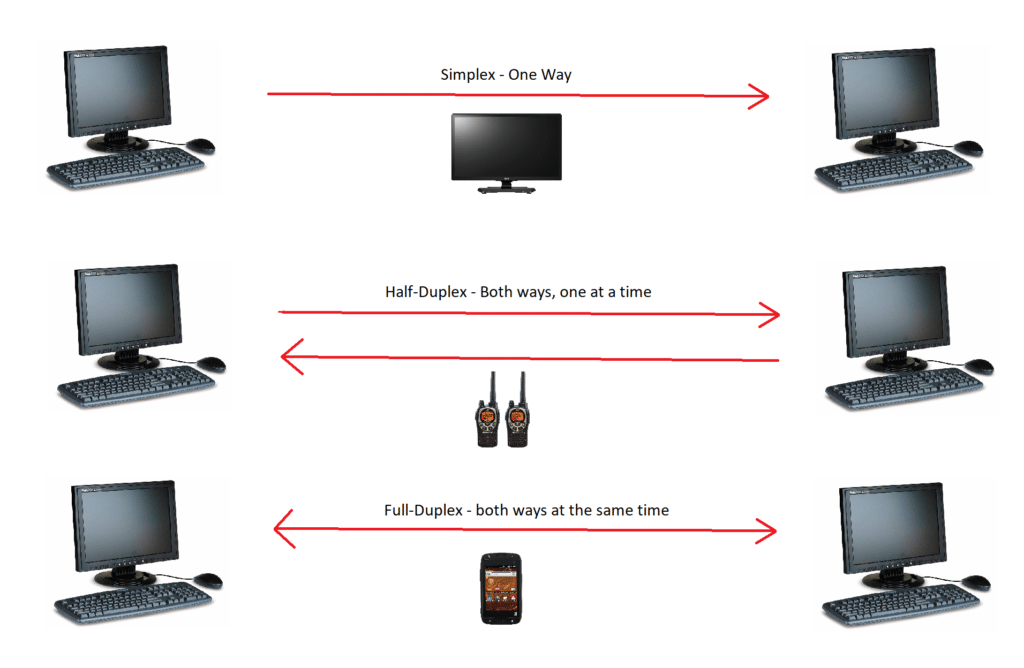Data transmission in a computer happens when bits (see article on binary here) are sent from one system to another either through radio waves (wirelessly) or through cables, for example by twisted copper wire or fibre-optic. This post will look at the different methods by which bits can be sent across a network.

The rate at which data is transferred is known as the bit rate. it is measured in bits per second. This is the number of bits that can be transferred over a certain period of time. The more bits you can transfer, the faster your connection is.
Types of Data Transmission
Key Terms:
- Serial – sending data one bit at a time
- Parallel – sending multiple bits simultaneously
- Interference – distrubances in an electrical signal that can corrupt data
Serial Data Transmission
Serial transmission only uses a single wire to transfer the data bits. Each bit, whether it is a 1 or a 0 is sent one after the other and is a lot cheaper than its parallel counterpart. Serial transmission can be used to send the data over long distances as is used more frequently than parallel for this use case. Each bit is sent according to a time interval. intervals can be set to different timings depending on the speed of the connection.
Let us consider an example:
if we have an 8-bit byte of data, this is what it might look like if we sent it over serial transmission.

Parallel Data Transmission
Parallel transmission uses several wires to send the bits simultaneously. In our previous example instead of sending 8 bits one after the other, it may use 8 separate wires that can each send 1 bit. A much faster transmission rate can be achieved using this type of method. More cables, however, means more wires. It also means cables are generally more expensive and shorter in length than a serial transmission cable.

Comparison of the two
| Serial Transmission | Parallel Transmission |
| Uses a single wire | Uses multiple wires |
| Used for long distances | Used for short distances |
| Less expensive due to only having one wire | more expensive due to needing multiple wires |
| Slower than parallel due to it only sending one bit at a time | Faster transmission speed as more bits are sent at the same time over multiple wires |
| Safer as it is easier to group the bits together | Less safe as all bits sent at once meaning they need to be reconstructed in the correct order |
Parallel connections are quite simple to implement in theory, however, more interference occurs when this method is used due to the multiple wires sending data at the same time. Because of this interference, it is best when parallel connections are kept to less than 5 meters. In the past, parallel connections were used for printers due to the sheer amount of data needed to be received quickly. Over time, technology has changed and ribbon cables (see below) have been largely replaced by Universal Serial Bus (USB) technology. USB sends data in serial mode but still at a much faster pace than parallel ever did.

The only typical use now for parallel connections are on single-use computers or integrated circuits (IC) where speed and low cost is paramount. Think of an IC as a microprocessor. It is very small so the parallel connection makes sense as we can send multiple bits much faster than if we used serial methods. Problems such as interference is not so much a problem in these types of devices due to their small size as well as the fact data is travelling only small distances when compared to that of a computer and a printer connected via a ribbon connecter
Modes of transmission
Key Terms:
- Simplex – sending data one direction only at a time
- Duplex – sending data in both directions at the same time
- Half–duplex – sending data in both directions but on one direction at a time
Simplex
In this transmission mode, data is only sent in one direction only. Think of it like your television receiving a broadcast.
Full-Duplex
In this transmission mode, data is sent in both directions at the same time. Think of it like a normal telephone call using your mobile phone
Half-Duplex
In this transmission mode, data is only sent in one direction only. Think of it like a walkie-talkie radio where you can only speak one at a time to each other.

Advertisement
